Do LED lights ever make you ponder, “Are LED lights safe? Can they be harmful to my health?” If so, you’re not alone. These questions are becoming increasingly common as LED lights continue to dominate the lighting market.
Rest assured—LED lights are widely recognized as a safe choice for your lighting needs. Endorsed by authorities like the US Department of Energy and Environmental Protection Agency, as well as global health organizations, LED lights are mercury-free and run cool, reducing fire hazards. But remember, like any technology, the correct usage is key.
Now, let’s dispel some of the misconceptions and shed light on the safety of LED lights.
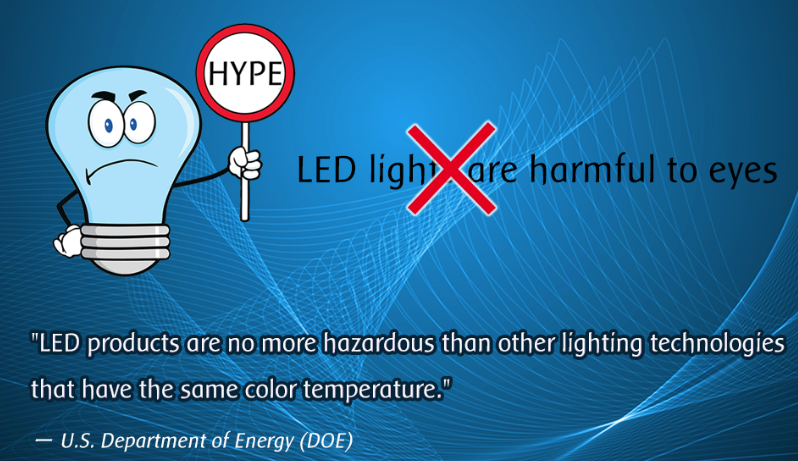
Understanding the Safety of LED Lights
LED lights are becoming an increasingly popular choice for lighting needs across the globe. Here’s what you need to know about their safety:
- Blue Light Hazard: LED lights emit blue light, much like the natural morning sunlight. But excessive exposure, especially in the evening, can disrupt sleep patterns and strain the eyes. In extreme cases, it can potentially damage the retina. Awareness and thoughtful use can mitigate this risk.
- Flicker & Glare: Low-quality LEDs might flicker at a rate too fast for the human eye to notice, potentially causing headaches or eyestrain. Direct, harsh LED light can also cause temporary vision impairment, known as glare. This is more common with poorly designed lighting fixtures or LEDs used without suitable diffusers.
- Photobiological Safety: This term refers to the potential harm that various light sources, including LEDs, can cause to the eyes and skin. It considers risks from all types of light (visible, infrared, and ultraviolet), not just blue light. Though more pertinent to high-intensity lamps, photobiological safety is still a consideration for household LEDs.
- Electrical Safety: As with any electronic device, LEDs carry a risk of electric shock or fire if mishandled. By following the proper installation and usage guidelines, these risks can be mitigated.
- Chemical Composition: Although LEDs contain trace amounts of potentially harmful substances like lead, arsenic, and nickel, these are safely encapsulated within the device and pose no risk during regular use. The risk arises only during improper disposal or accidental breakage.
- Light Pollution: LEDs contribute to light pollution due to their high intensity and broad spectrum of light. While not a direct health hazard, excessive light pollution can disrupt ecosystems and negatively affect sleep patterns.
With the right selection, installation, and use, LED lights are considered safe for a variety of applications, from residential to commercial and industrial settings. High-quality products, such as those offered by Sinolumi LED Ltd., prioritize these safety aspects to deliver performance without compromising safety.
Is Blue Light Safe for Our Eyes and Skin?
Blue light, a prominent color in the light spectrum, is emitted by a variety of sources – from the sun to electronic devices, fluorescent bulbs, and LED lights. It shares some similarities with ultraviolet rays, and although it can have several health benefits when exposure is controlled and limited, it’s important to also understand the potential risks associated with excessive exposure.
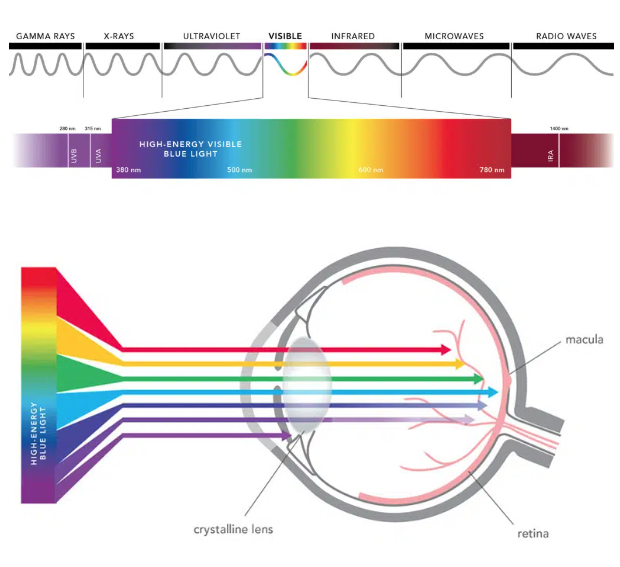
The Double-Edged Sword: Blue Light
Potential Hazards of Blue Light:
- Eye Strain and Potential Retinal Damage: Prolonged exposure to high-intensity blue light can lead to eye strain and discomfort. In more severe cases, it can potentially damage the light-sensitive cells in the retina, a condition known as blue light hazard.
- Sleep Disruptions: Blue light regulates our sleep-wake cycles. Excessive exposure, especially in the evening, can disrupt these natural circadian rhythms, leading to insomnia.
- Skin Damage: Overexposure to blue light can cause skin damage over time, potentially accelerating the aging process and contributing to skin cancer.
Potential Benefits of Blue Light:
- Therapeutic Properties: Blue light has been noted for its therapeutic properties, which include the potential to treat mild to moderate psoriasis and acne. It also plays a crucial role in photodynamic therapy, a treatment method used in medical science.
- Actinic Keratosis Treatment: Blue light therapy can potentially reduce the appearance of rough, scaly patches on the skin caused by actinic keratosis, thereby lowering the risk of skin cancer.
While blue light has its benefits, it’s essential to manage exposure and use it responsibly. Like all light therapies, treatments involving blue light should be administered under the supervision of a healthcare professional.
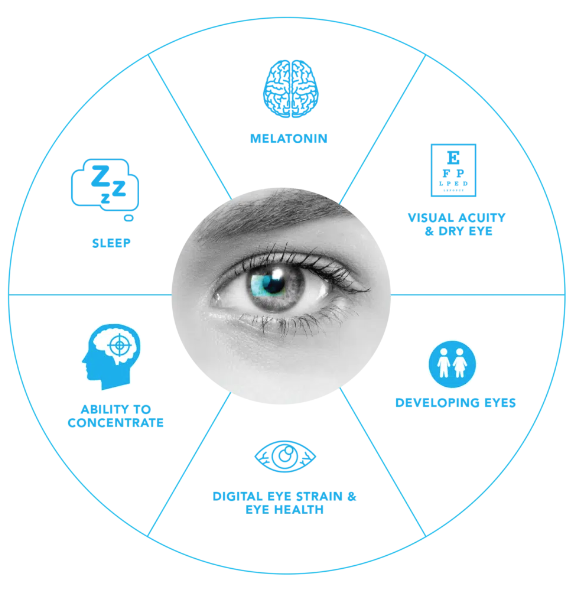
Harnessing LED Light Colors for Varied Benefits
LED lights offer much more than just illumination. Besides lighting up spaces, they may also have a range of beneficial effects on both our physical and mental health. By harnessing different colors of LED lights, we may be able to achieve different health benefits.
Let’s explore the potential benefits associated with green, red, blue, yellow, orange, and purple LED lights.
- Green LED Lights: Thought to boost the body’s vitality, green LED lights may strengthen muscles.
- Red LED Lights: Associated with relaxation and sleep quality, red LED lights may aid in preparing the body for restful sleep.
- Blue LED Lights: Need an alertness boost? Blue LED lights may help keep you attentive and awake.
- Yellow LED Lights: Yellow LED lights may have positive effects on mental health, potentially alleviating symptoms of depression.
- Orange LED Lights: Orange LED lights may stimulate creativity and enhance ideation.
- Purple LED Lights: Purple LED lights might aid in reducing cognitive anxiety and emotional stress.
LED lights offer more than just visual effects. However, while certain colors of light are associated with these effects, individual reactions can vary. As the field of light therapy continues to evolve, further research will expand our understanding of these potential benefits.
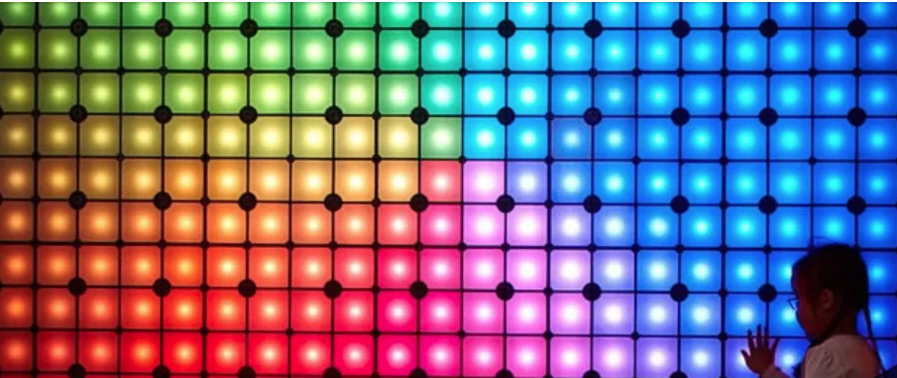
Busting Misconceptions About LED Lights
Despite the advancements in LED technology, misconceptions about their potential harm persist. Let’s tackle some common myths associated with LED lights.
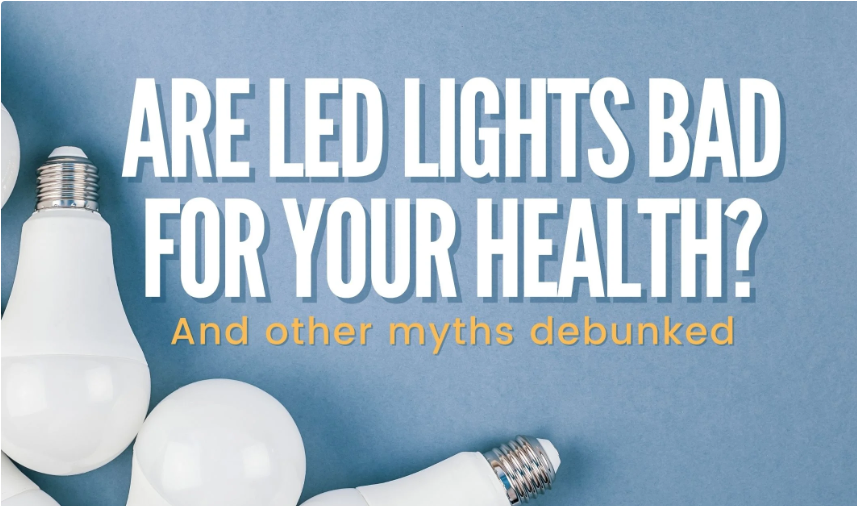
Myth 1: LEDs Can Damage Your Vision
A prevailing misconception, especially about blue LEDs, is that they can impair eyesight. Modern LED lights, however, are as safe for your eyes as any other artificial light source. They even possess therapeutic benefits, including use in skin and health therapies. Unlike certain other light therapies, LEDs don’t emit harmful ultraviolet rays. They do emit blue light, a component of natural sunlight, but remember that an excess of anything can be detrimental. Just as you wouldn’t stare directly into the sun, avoid prolonged staring at any light source, including LEDs.
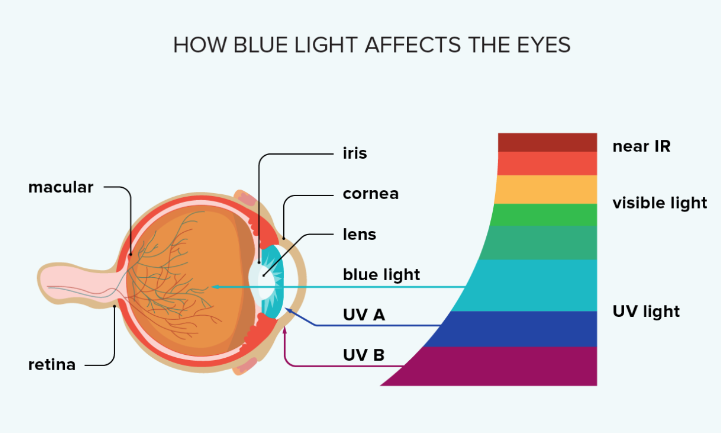
Myth 2: LEDs Are Toxic
The notion that LEDs contain toxic substances harmful to health is a myth. Quality LED products from reputable manufacturers do not include hazardous substances. Unlike fluorescent lights, such as CFLs, LEDs do not contain harmful mercury. It’s crucial to ensure you purchase LEDs from trusted manufacturers to avoid exposure to potentially harmful materials.
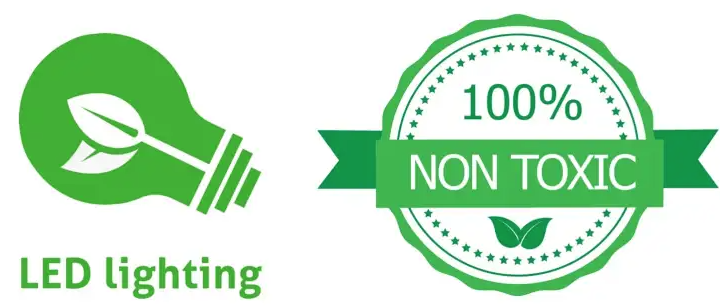
Myth 3: LEDs Disrupt Sleep
It’s a popular belief that LED lights negatively impact sleep. However, this isn’t entirely accurate. Blue light exposure, a natural component of sunlight, can indeed be beneficial during the daytime, enhancing mood and focus. However, exposure to bright light close to bedtime can disrupt sleep patterns. This isn’t exclusive to LEDs but applies to all bright light sources. Rather than shunning LEDs, it’s recommended to practice good sleep hygiene by limiting the use of electronic devices close to bedtime.
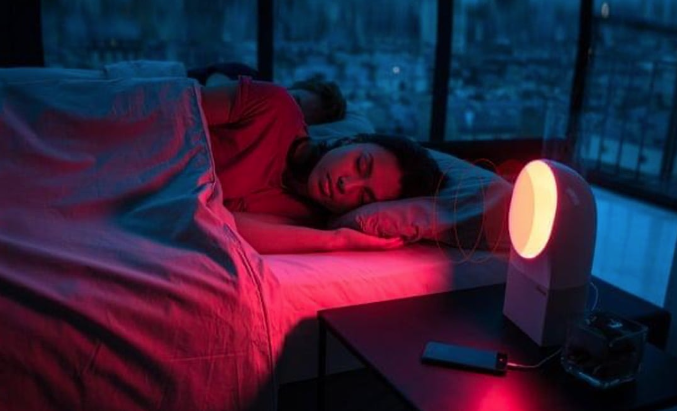
Myth 4: LEDs Are Too Bright
Previous LED light designs were often overly bright and harsh. However, modern LEDs offer a wide array of dimmers and color temperatures, ranging from cool blue to warm yellow, allowing you to control your light exposure effectively. Bright LED lights can also enhance safety by illuminating public areas such as college campuses or city streets.
Myth 5: LEDs Can Cause Skin Diseases
Contrary to rumors, LED lights do not cause skin diseases. In fact, LED lights are recognized for their therapeutic properties in treating various skin conditions, including redness, wrinkles, scarring, aging signs, acne, and dark spots. Today, dermatologists and spas utilize LEDs for their healing capacities. Different wavelengths of visible light, corresponding to different LED colors, penetrate the skin at varying depths, resulting in diverse biological effects beneficial for treating various skin conditions.
Remember, staying informed and discerning fact from fiction is key when it comes to LED lighting. Armed with the correct information, you can make the most out of your LED usage.
Understanding the Potential Risks of LED Lights
While LED lights are generally safe, certain circumstances might amplify their potentially harmful effects. Here are a few scenarios:
- Overexposure to Blue Light in the Evening:
Blue light, prevalent in LED lights and electronic devices, plays a crucial role in regulating our biological clock or circadian rhythm. During daylight hours, exposure to blue light stimulates the production of melanopsin, a hormone that helps us stay awake and alert. However, excessive exposure to blue light in the evening can trick our bodies into continued melanopsin production, disrupting our natural sleep patterns. Therefore, it’s recommended to limit exposure to LED lights and screens in the hours leading up to bedtime. Fortunately, many modern LED lights offer warm-toned options, which emit less blue light, reducing this risk.
- Direct Eye Exposure to LED Lights:
Staring directly at LED lights for extended periods can potentially harm the retina, the light-sensitive layer at the back of your eyes. Research suggests that intense radiation from the blue light spectrum present in LEDs can cause irreversible cell damage. This risk is particularly relevant in environments with high-intensity LED lights, such as parking lots or shopping malls. For eye safety, it’s advisable to avoid staring directly at LED lights and limit screen time on LED-lit devices. Using high-quality, industry-tested LED lights can also help minimize the potential hazards of blue light exposure.
- Exposure to Flickering LEDs:
Flickering lights can strain the eyes, disrupt focus, and in rare cases, trigger symptoms like dizziness or seizures. Rapid changes in light intensity can outpace our eyes’ natural ability to adjust to different light levels. Normally, our irises respond to bright light by constricting the pupils, protecting the retina, and improving visual acuity. In low light conditions, the iris dilates the pupil to maximize light intake. However, in the presence of flickering lights, these adjustments can’t keep pace, potentially leading to visual discomfort or disorientation. It’s best to identify and rectify the causes of flickering, often linked to electrical issues, to ensure a safe and comfortable lighting environment.
Understanding potential risks and taking necessary precautions can help you enjoy the benefits of LED lighting while minimizing potential harm.
FAQs
Conclusion
In summary, LED lights are safe and pose no inherent health risk when used properly. While they do emit a higher percentage of blue light compared to other light sources, this is not inherently dangerous. Misuse or overuse of any light source can potentially cause harm, but with proper use and high-quality products, LED lights are a safe, energy-efficient, and environmentally friendly lighting option.
As a reputable manufacturer of LED lighting, Sinolumi LED Ltd. ensures that all our products meet the highest quality and safety standards. We are committed to providing you with safe, reliable, and customizable LED lighting solutions, helping you illuminate your world without any worries.
Remember, staying informed and discerning fact from fiction is key when it comes to LED lighting. Armed with the correct information, you can make the most out of your LED usage. So, light up your life with LEDs, and enjoy the brilliance they bring to your surroundings!
